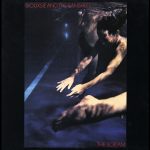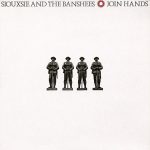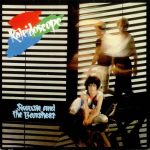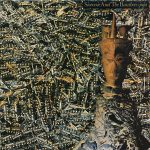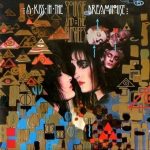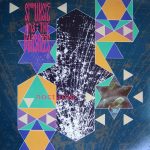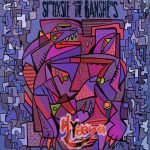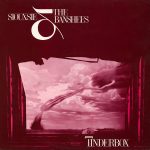Siouxsie and the Banshees
Siouxsie & the Bansheesは、女性ボーカルのSiouxsie Siouxを中心として1976年に結成されたイギリスのパンク、ニュー・ウェイヴのバンド。1996年に解散。2002年に再結成してツアーを行い、ライブ・アルバムを発表。
その音楽性は、活動時期によって多様性に富んでいる。初期のストレートなパンクから出発して、中期には呪術的とも評されたサイケデリック色を強めた独自のサウンドを構築したが、後期にはスージー・スーのボーカルがより重視されるようになった。
元セックス・ピストルズの親衛隊であったボーカルのSiouxsie SiouxとベースのSteven Severinを中心に結成された。ドラムとしては主としてBudgieが参加。ギターは頻繁にメンバー・チェンジを繰り返したが、初期には元マガジンのJohn McGeochが加入、後にはザ・キュアーのRobert Smithらがゲスト参加した。
バンシーズは、アイルランドおよびスコットランドに伝わる女の妖精であり、家人の死を予告すると言われている バンシー から取られている。スージー・スーの名前は、本名のスーザンの愛称であるスージー及びスーを、インディアンのスー族(Sioux)の綴りにしたものである。また、セヴェリンは、マゾッホの『毛皮を着たヴィーナス』の主人公の名である。
Siouxsie SiouxとBudgieは1991年に結婚、2007年に離婚。(ウィキペディア)
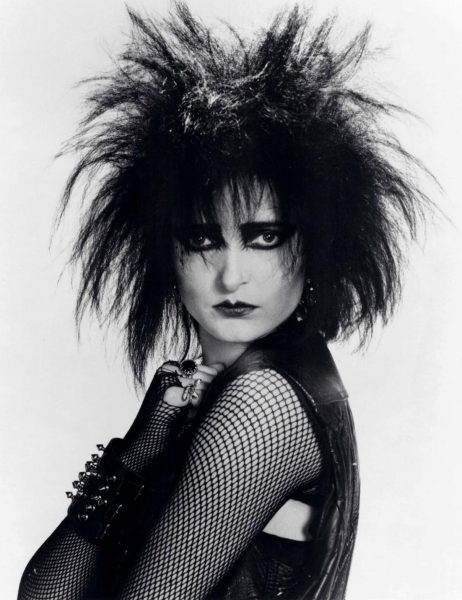
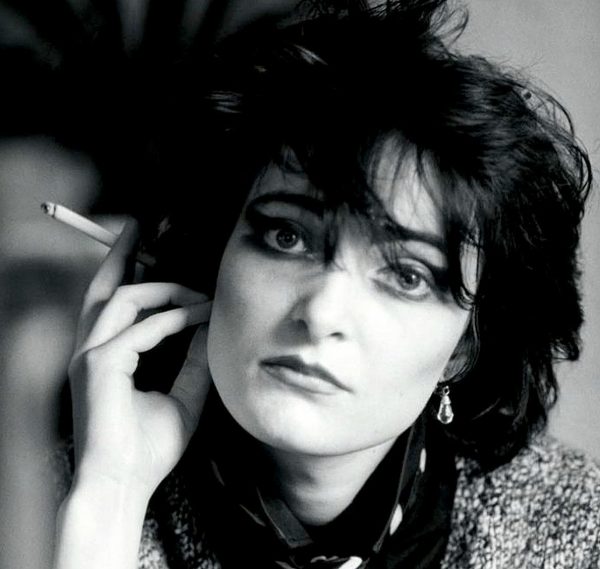
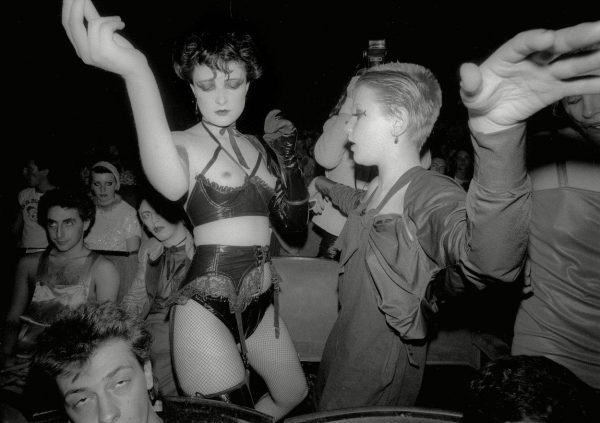
Siouxsie and the Banshees were an English rock band formed in London in 1976 by vocalist Siouxsie Sioux and bass guitarist Steven Severin. Initially associated with the English punk rock scene, the band rapidly evolved to create “a form of post-punk discord full of daring rhythmic and sonic experimentation”. With the release of Juju in 1981, the group also became an important influence on the emerging gothic rock scene. They disbanded in 1996, with Siouxsie and drummer Budgie continuing to record music as the Creatures, a second band they had formed in the early 1980s. In 2004, Siouxsie began a solo career.
Siouxsie and the Banshees’ work places highly in both musicians’ polls and music papers’ lists. The Times cited the group as “one of the most audacious and uncompromising musical adventurers of the post-punk era”. In 2006, Mojo rated guitarist John McGeoch in their list of “100 Greatest Guitarists of All Time” for his work on “Spellbound”.
Siouxsie Sioux and Steven Severin met at a Roxy Music concert in September 1975, at a time when glam rock had faded and there was nothing new coming through with which they could identify. From February 1976, Siouxsie, Severin and some friends began to follow an unsigned band, the Sex Pistols. Journalist Caroline Coon dubbed them the “Bromley Contingent”, as most of them came from the Bromley region of South London, a label Severin came to despise. “There was no such thing, it was just a bunch of people drawn together by the way they felt and they looked”. They were all inspired by the Sex Pistols and their uncompromising attitude. When they learned that one of the bands scheduled to play the 100 Club Punk Festival, organised by Sex Pistols manager Malcolm McLaren, were pulling out from the bill at the last minute, Siouxsie suggested that she and Severin play, even though they had no band name or additional members. Two days later, the pair appeared at the festival held in London on 20 September 1976. With two borrowed musicians at their side, Marco Pirroni on guitar and John Simon Ritchie (already commonly known as Sid Vicious) on drums, their set consisted of a 20-minute improvisation based on “The Lord’s Prayer”.
While the band intended to split up after the gig, they were asked to play again. Two months later, Siouxsie and Severin recruited drummer Kenny Morris and guitarist Peter Fenton. After playing several gigs in early 1977, the band realised that Fenton did not fit in because he was “a real rock guitarist”. John McKay finally took his place in July.
While the band sold out venues in London in early 1978, they still had problems getting the right recording contract that could give them “complete artistic control”. Polydor finally offered this guarantee and signed them in June. Their first single, “Hong Kong Garden”, featuring a xylophone motif, reached the top 10 in the UK shortly after. A NME review hailed it as “a bright, vivid narrative, something like snapshots from the window of a speeding Japanese train, power charged by the most original, intoxicating guitar playing I heard in a long, long time”.
The band released their debut album, The Scream, in November 1978. Nick Kent of NME said of the record: “The band sounds like some unique hybrid of the Velvet Underground mated with much of the ingenuity of Tago Mago-era Can, if any parallel can be drawn”. At the end of the article, he added this remark: “Certainly, the traditional three-piece sound has never been used in a more unorthodox fashion with such stunning results”.
The Banshees’ second album, Join Hands, was released in 1979. In Melody Maker, Jon Savage described “Poppy Day” as “a short, powerful evocation of the Great War graveyards”, and Record Mirror described the whole record as a dangerous work that “should be heard”. The Banshees embarked on a major tour to promote the album. A few dates into the tour in September, Morris and McKay left an in-store signing after an argument and quit the band. In need of replacements to fulfill tour dates, the Banshees’ manager called drummer Budgie, formerly with the Slits, and asked him to audition. Budgie was hired, but Siouxsie and Severin had no success auditioning guitarists. Robert Smith of the Cure offered his services in case they could not find a guitarist (his group were already the support band on the tour), so the band held him to it after seeing too many “rock virtuosos”. The tour resumed in September and after the last concert, Smith returned to the Cure.
Drummer Budgie became a permanent member and the band entered the studios to record the single “Happy House” with guitarist John McGeoch, formerly of Magazine. Their third album, Kaleidoscope, released in 1980, saw the Banshees exploring new musical territories with the use of other instruments like synthesizers, sitars and drum machines. The group initially had a concept of making each song sound completely different, without regard to whether or not the material could be performed in concert. Melody Maker described the result as “a kaleidoscope of sound and imagery, new forms, and content, flashing before our eyes”. Kaleidoscope was a commercial success, peaking at number 5 in the UK album chart. This lineup, featuring McGeoch on guitar, toured the United States for the first time in support of the album, playing their first shows in New York City in November 1980.
For Juju (1981), the band took a different approach and practised the songs in concert first before recording them. Juju, according to Severin, became an unintentional concept album that “drew on darker elements”. Sounds hailed it as “intriguing, intense, brooding and powerfully atmospheric”. The album later peaked at number 7 in the UK album charts and became one of their biggest sellers. McGeoch’s guitar contributions on Juju would be later praised by Johnny Marr of the Smiths.
During the 1981 accompanying tour, Siouxsie and Budgie secretly became a couple. At the same time, they also began a drum-and-voice duo called the Creatures, releasing their first EP, Wild Things.
The Banshees followed in 1982 with A Kiss in the Dreamhouse. The record, featuring strings on several numbers, was an intentional contrast to their previous work, with Severin later describing it as a “sexy album”. The British press greeted it enthusiastically. Richard Cook finished his NME review with this sentence: “I promise…this music will take your breath away”. At that time, McGeoch was struggling with alcohol problems, and was hospitalised on his return to a promotional trip from Madrid. The band fired him shortly thereafter. Severin asked Robert Smith to take over guitarist duties again; Smith accepted and rejoined the group in November 1982.
During 1983, the band members worked on several side projects; Siouxsie and Budgie composed the first Creatures album, Feast, while Severin and Smith recorded as the Glove. Smith then insisted on documenting his time with the Banshees, so the group released a cover version of the Beatles’ “Dear Prudence” in September 1983. It became their biggest hit, reaching number 3 on the UK Singles Chart. They also released a live album, Nocturne, and completed their sixth studio album, Hyæna. Shortly before its release in May 1984, Smith left the group, citing health issues due to an overloaded schedule, being in two bands at once.
Ex-Clock DVA guitarist John Valentine Carruthers replaced him. The Banshees then reworked four numbers from their repertoire, augmented by a string section, for their The Thorn EP. NME praised the project at its release: “The power of a classical orchestra is the perfect foil for the band’s grindingly insistent sounds”. The new Banshees lineup spent much of 1985 working on a new record, Tinderbox. The group finished the song “Cities in Dust” before the album, so they rushed its release as a single prior to their longest tour of the UK. Tinderbox was finally released in April 1986. Sounds magazine noted: “Tinderbox is a refreshing slant on the Banshees’ disturbing perspective and restores their vivid shades to pop’s pale palette”. Due to the length of time spent working on Tinderbox, the group desired spontaneity and decided to record an album of cover songs, Through the Looking Glass, in 1987. Mojo magazine later praised their version of “Strange Fruit”. After the album’s release, the band realised Carruthers was no longer fitting in and decided to work on new material as a trio.

